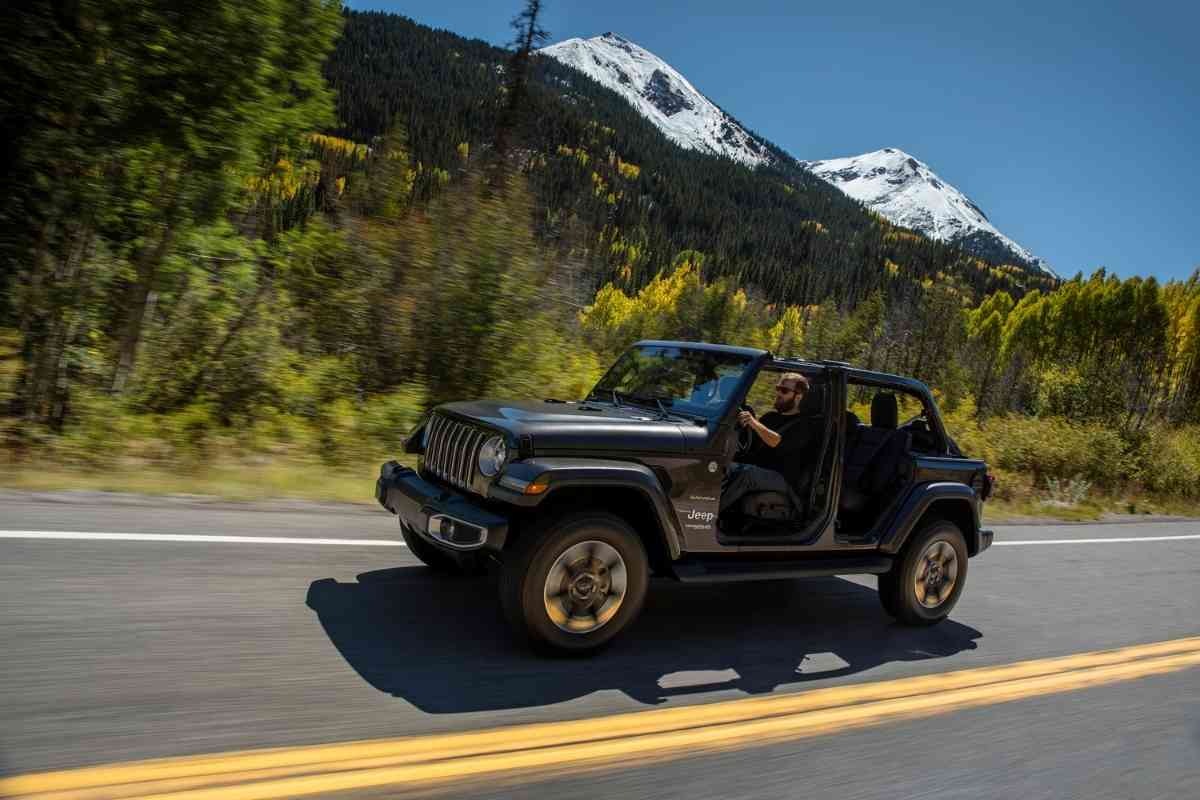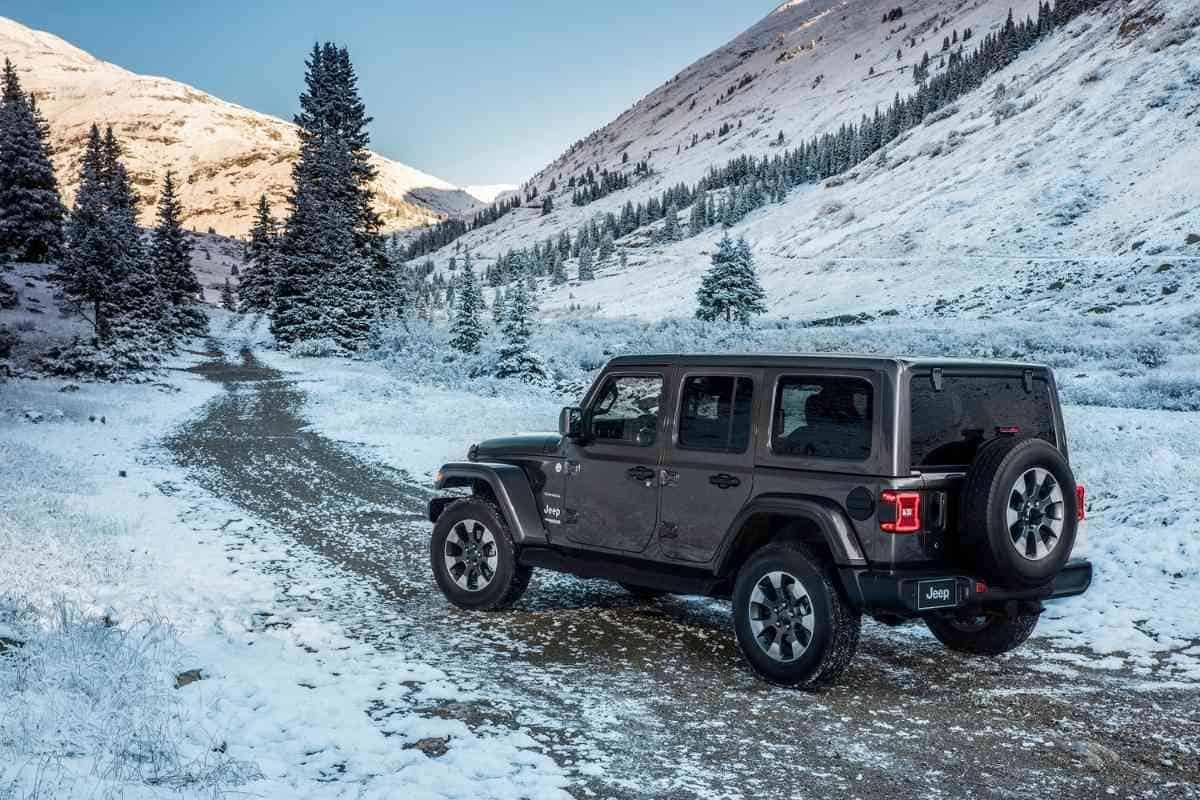3.73 vs. 4.10 Jeep Gear Ratios: Which Is Better?
Gear ratios can be confusing, especially on vehicles that can go off-road. Which gear ratio is better for your Jeep, 3.73 or 4.10? What are just numbers to most make a significant difference in the performance of your Jeep? The answer depends in part on how you use your Jeep, how much work you want to do, and the money you have to spend to change it.

Is a 3.73 or a 4.10 gear ratio better in a Jeep?
Whether a 3.73 gear ratio or 4.10 gear ratio is better is up to the driver and the situation. 4.1 can accelerate faster but uses more fuel on the highway. 3.73 will get better gas mileage but not as good of acceleration. If you are towing, 4.1 helps by delivering more torque to the rear wheels.
We’ll help you understand more about Jeep gear ratios to make sense of how they apply to your Jeep driving habits. We’ll also explain what needs to be done to change gear ratios – and whether or not this can be done before buying a Jeep.
We love Jeeps – and a bit of off-roading. In reality, gear ratios affect a little bit of everything when it comes to driving.
What are gear ratios?
Gear ratios represent how many times the vehicle’s driveshaft must rotate in order to cause a full rotation of the axle. The numerical differences between gear ratios look small but end up having a big impact on performance.
Fewer driveshaft turns to result in less work for the engine. More driveshaft turns result in more torque, which is common for driving off-road and wanting to tow.
What gear ratios are common?
Most vehicles have a stock gear ratio of 3.73 or lower. The purpose is to provide smooth, even acceleration from a stop and miles per gallon ratings that are pleasing to the customer at the pump – and for federal gas mileage requirements.
Benefits to 3.73
You’ll find that 3.73 is a fairly standard gear ratio amongst many vehicles,
including Jeep. 3.73 requires fewer turns of the driveshaft to achieve a full tire rotation. 3.73 provides the best balance of acceleration with good gas mileage, especially while traveling at highway speeds. The results should be a lower revolution per minute count which will positively impact gas mileage.
Benefits to 4.10
What about 4.10? 4.10 is more often used for sports cars and towing. The result is a vehicle that is quicker off the line (either for towing or between stoplights).
What is the consequence of a faster car? Worse gas mileage, as the vehicle will rev up faster and higher. You’ll also get a lower top speed because the vehicle will be fighting harder to achieve highway speed.
What gear ratios are possible in a Jeep?

A stock gear ratio can be anywhere from 3.07 to 4.10, with increments of about .25. As you can tell, the slight changes in gear ratio make a big difference. Most of your stock Jeeps will come with 3.73. Some models and trims are also available in a 4.10 gear ratio.
You’ll want to check the build sheet for your Jeep to know which gear ratio it is. Another way to check the gear ratio is to lift the car with a jack and turn the driveshaft. Carefully count how many turns of the driveshaft it takes to fully rotate the wheel. Do this slowly so you get it right!
So which gear ratio is best?
The answer is up to you! While speaking only about 4.10 and 3.73, you’ll want to use 3.73 to get the evenest acceleration possible with the best gas mileage. 3.73 can tow, but not with as much power as a 4.1. If you plan to use your Jeep as a commuter vehicle with occasional off-road and towing, 3.73 should be just fine.
You might want to opt for a 4.1 gear ratio if you want a bit more low gear performance out of your vehicle if you intend to tow more.
4.1 can be more fun to drive with if you aren’t concerned about fuel costs, as your vehicle will be at a higher RPM while traveling at highway speed and use more fuel doing faster takeoffs.
What if I change to larger tire sizes?
Changing to a larger tire size often comes with the need to regear your Jeep, both because the purpose of larger tires tends to be off-roading and rock crawling and because your ride quality and miles per gallon will suffer otherwise.
If you upgrade to tires larger than 33”, you’ll want to think about getting gearing differently.
How do I do a gear change?
Let’s say you want to change your vehicle from 4.1 to 3.73 or the other way around, or want to go opt for a higher gear number we haven’t mentioned yet. In many Jeeps, you can either have a mechanic shop put in gears that you purchase or if you know your Jeep well, you can do it in your garage.
New gears are readily available online or from an auto parts store. The price to install them at a shop varies – though it could take an experienced tech at home a day to install.
If you do learn how to change your own gears, you could change them based on your need. Are you towing something for work or playing for a while? Consider gearing up to 4.1. Just driving around for your commute? Could be worth your time to change to a lower gear?
When would I want to move gear ratios to something larger?
You don’t always need to charge gear ratios above 4.1 if you are going off-roading and doing rock crawling. While a higher gear ratio can be helpful to get enough torque to inch up a rock or a mud bank, the experience will also provide you with the knowledge of how to do the same things in a potentially lower gear.
When you plan to use your Jeep to rock crawl or off-road on a regular basis, consider going higher.
The result is that you’ll have an easier vehicle experience while off-roading, which is offset by using a bit more gas, and a potentially higher RPM, and a louder engine at high speed.
Most people who do go off-road will notice a larger effect of changing to a larger tire size in terms of ride quality. Larger tire sizes need a little more effort to ensure that they remain even when driving, as they will inevitably be ground against rocks and hard objects that can make them uneven.
While this sounds negative, this is what Jeep enthusiasts live for, and they figure out how to make the most of wheel weights and improvised methods of keeping tread even with big tires.
Are there other ways to save money on gas with a Jeep or make towing more effective?
Saving on gas is more about driving habits. You can have a Jeep with a 4.1 gear ratio, but feather the pedal from a stoplight and get better gas mileage.
You could also stomp the gas in a 3.73 and not feel the full effects of the gas but still, waste some.
Conversely, there isn’t a way to improve the towing capacity or ability of a Jeep with a lower gear ratio. Most trucks start with a 4.1 gear ratio and move up when the towing capacity becomes larger.
For off-roading, most enthusiasts want to be able to keep the gas on, gently while driving and not have to use the brakes too much. A controlled pace is required to avoid losing momentum in some scenarios. This is where some experience can help as much as gear ratios.
What should I do next?
Think about what you want! You can buy a Jeep with a 4.1 gear ratio or you can buy a smaller gear ratio, then change the gears if needed. You could also get new gears for your existing Jeep, depending on your needs.
One of the best parts about owning an SUV like a Jeep is that they are customizable and are built right for off-road though they can easily handle the highway too. This is in great contrast to some SUVs that are built purely for comfort and come at a much higher price. Go enjoy your Jeep!
